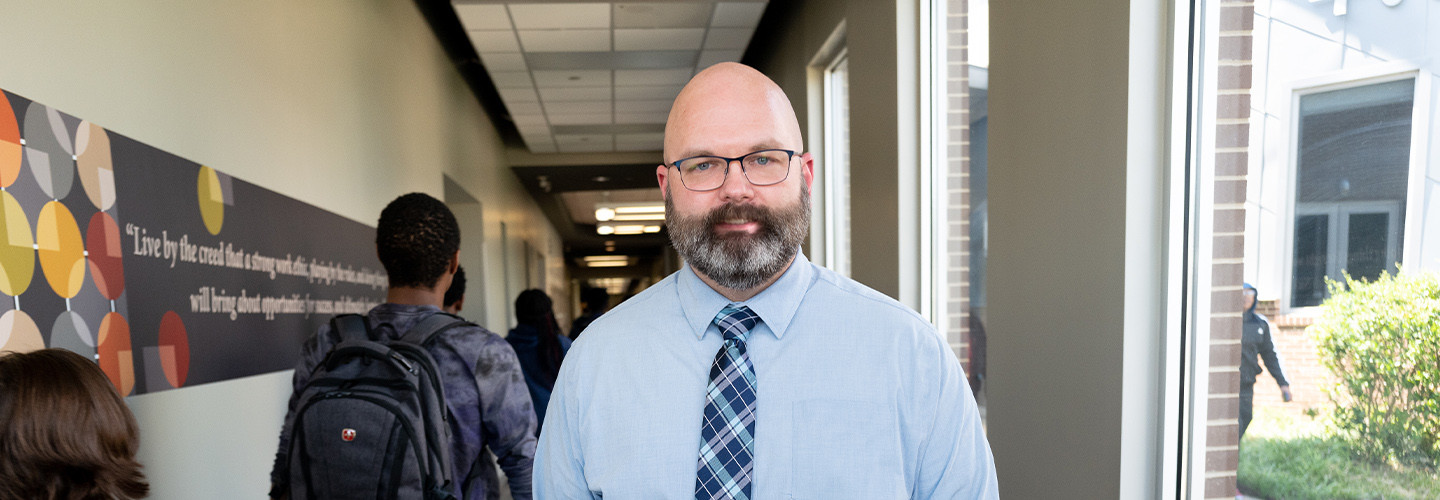ELLIS: Process is important. When a school day starts and a building opens, several gates also open. In every case, we need to educate our teams so that there’s a trained supervisor, teacher or administrator there. This prevents unwanted guests from coming onto campus.
We create a secured, one-entrance, one-exit environment, and everyone must sign in. That way, we have accountability for who’s on campus at any time.
EDTECH: What are some unique technologies you’ve found particularly helpful with physical security?
DRIGGERS: We’re a one-to-one district, so all of our students have Chromebooks. We use a content filtering software to monitor student email or documents created, or anything that they’re working on that has certain alarming keywords or pictures in their search queries.
The software flags if they’ve made threats against other students or are looking up suicide-related content. I think that has been helpful as well.
MORE ON EDTECH: Software keeps students' mental health at the forefront.
JENKS: All of our employees and local police have badges that allow them to enter school buildings. They also have master keys available should they need to get in during a heightened alert.
We have our radios and other methods of communication that connect us to let us know that we might need to secure a campus or send people on lockdown because of something in the community surveillance video.
EDTECH: What is one part of your security process that you refined?
DRIGGERS: This year, we’ve received more requests for additional access controls than we’ve had in several years. When we started with access control in 2014, not many principals requested the schedules for the doors.
Now, most of the district's 800 doors are scheduled. We’ve also added video intercom systems on the doors, so that if all the doors are locked and a visitor comes up to the door, employees can see that person and they can buzz them in or not.
During our budget meetings this year, there were a lot of requests for fencing. With access control on the doors, we have been able to eliminate the distribution of keys, which has saved the district money by reducing costs related to rekeying buildings.
JENKS: It’s very important for us to have a way to discern the bat signal from the city lights. Alert fatigue can exacerbate things.
So, how do we make sure that emergency notifications for, let’s say, a medically fragile student ride a different conduit and receive priority in a different way from safety communications?
We can send specific notifications. We just need to make sure through our pre-incident decision-making that we are sending the right messages to the right people at the right times.
RELATED: Digital signage improves real-time district communications.
EDTECH: As more physical security tools fall under IT, has there been a melding of departments? Any advice for handling this shift?
DRIGGERS: There was not a melding, per se, because the technology office chose to implement cameras and access control through the IT department during its initial inception. These devices are just one more point on our network – camera and access control — require software for user access.
Technology takes care of the mechanics of some systems, but we rely on our security office to perform all the drills and exercises for schools.
The only advice I would give to fellow technology directors is that this is a true team effort that requires participation and coordination with a security office, technology and school personnel. A one-size-fits-all solution won’t work for everyone, but collaboration will.
JENKS: With the advent of IP-based surveillance cameras and VoIP phones, IT teams began to own a much larger chunk of physical security. Adding door access controls and HVAC controls made the environment even more complex.
My advice concerning these items is this: Be willing to set boundaries, but talk about what you and your IT team can do. Be solutions-oriented. The message needs to be, ‘We can work together to resource the plan we build.’ That statement assumes that there is a plan. Safety is not optional. We need to support clear why, how, and what solutions.
EDTECH: How important is it that nonsecurity personnel also get emergency response training?
ELLIS: We need to make certain that parents, teachers, staff and students are aware of security and safety issues and procedures. It’s not just the principal. It’s not just me or the superintendent. It’s everybody. We need to let them know if they see something or hear something that concerns them, they need to say something.
Because of the size of our district — We’re the ninth largest in the state, with nearly 51,000 students — we have two different primary law enforcement agencies that we work with. They come onto our school sites and they conduct active-shooter training. Our administrators are invited to attend and that happens two or three times a year.











